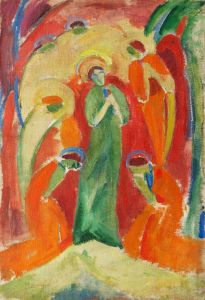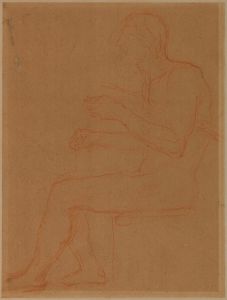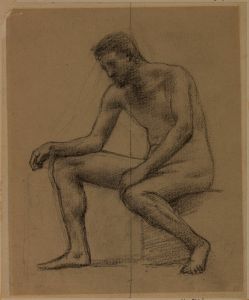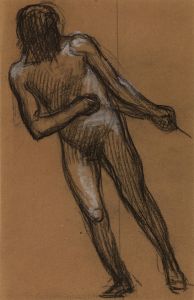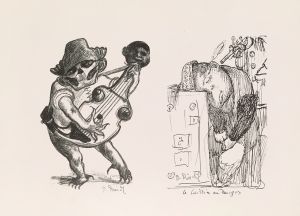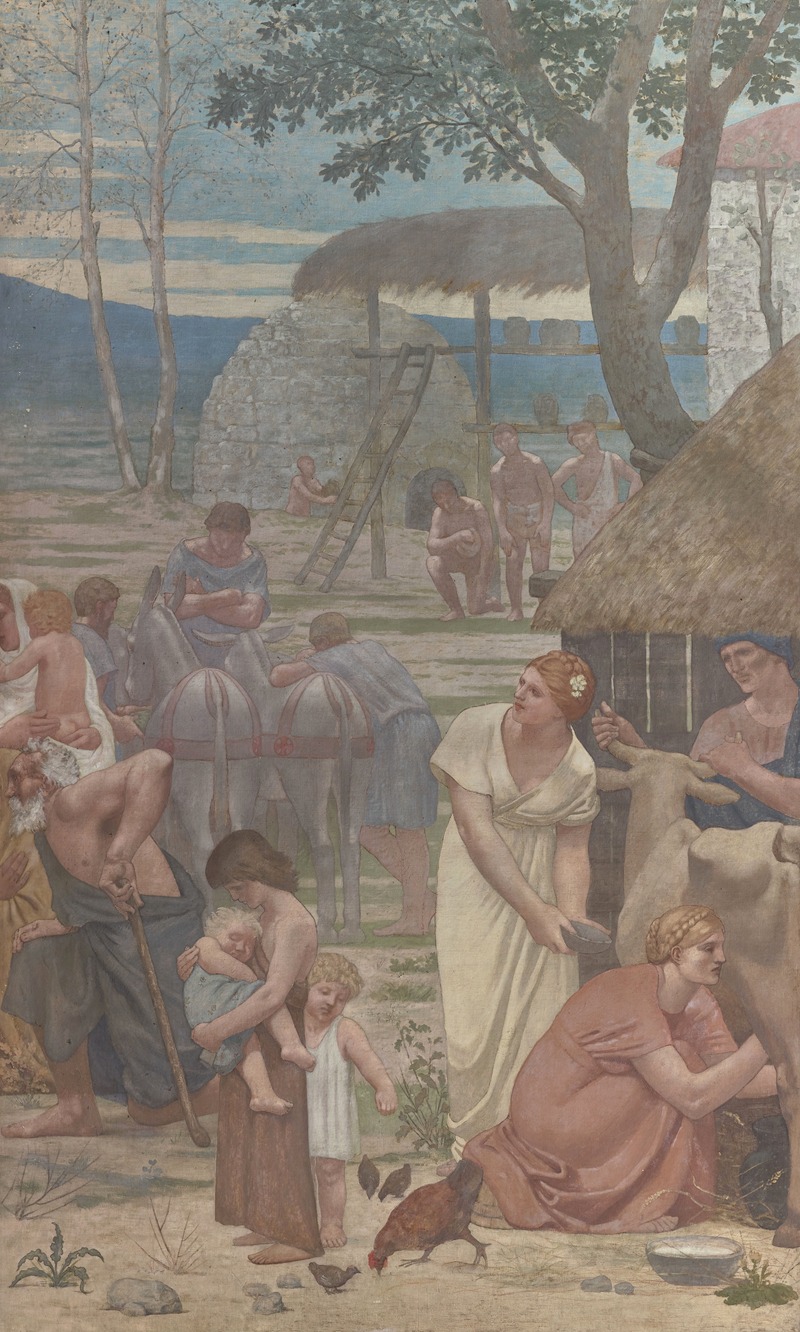
La Rencontre de sainte Geneviève et de saint Germain
A hand-painted replica of Pierre Puvis de Chavannes’s masterpiece La Rencontre de sainte Geneviève et de saint Germain, meticulously crafted by professional artists to capture the true essence of the original. Each piece is created with museum-quality canvas and rare mineral pigments, carefully painted by experienced artists with delicate brushstrokes and rich, layered colors to perfectly recreate the texture of the original artwork. Unlike machine-printed reproductions, this hand-painted version brings the painting to life, infused with the artist’s emotions and skill in every stroke. Whether for personal collection or home decoration, it instantly elevates the artistic atmosphere of any space.
Pierre Puvis de Chavannes was a prominent French painter known for his mural-style works that often depicted allegorical and historical themes. One of his notable paintings is "La Rencontre de sainte Geneviève et de saint Germain" (The Meeting of Saint Genevieve and Saint Germain). This artwork reflects Puvis de Chavannes' characteristic style, which combines classical composition with a muted color palette, creating a sense of timelessness and serenity.
The painting illustrates a significant moment in the life of Saint Genevieve, the patron saint of Paris. According to historical accounts, Saint Genevieve was born around 422 AD in Nanterre, near Paris. She is celebrated for her piety and her role in saving Paris from the Huns through her prayers and leadership. Saint Germain, the Bishop of Auxerre, is said to have recognized Genevieve's sanctity when she was a young girl, predicting her future importance to the Christian community.
In "La Rencontre de sainte Geneviève et de saint Germain," Puvis de Chavannes captures the moment when Saint Germain meets the young Genevieve. The painting is characterized by its calm and contemplative atmosphere, a hallmark of Puvis de Chavannes' work. The figures are depicted with a sense of grace and solemnity, emphasizing the spiritual significance of the encounter.
Puvis de Chavannes' use of color is particularly noteworthy in this painting. He employs a subdued palette, which enhances the ethereal quality of the scene. The soft, harmonious tones create a dreamlike ambiance, inviting viewers to reflect on the spiritual narrative being portrayed. The composition is balanced and harmonious, with the figures of Saint Genevieve and Saint Germain positioned centrally, drawing the viewer's attention to their interaction.
The painting is also notable for its lack of extraneous detail, a deliberate choice by Puvis de Chavannes to focus on the essence of the encounter. This minimalist approach is typical of his style, allowing the viewer to engage more deeply with the emotional and spiritual content of the work. The simplicity of the background further accentuates the figures, highlighting the significance of their meeting.
"La Rencontre de sainte Geneviève et de saint Germain" reflects Puvis de Chavannes' interest in themes of spirituality and virtue. His work often explores the intersection of human experience and divine influence, and this painting is no exception. By depicting this pivotal moment in the life of Saint Genevieve, Puvis de Chavannes not only honors her legacy but also invites contemplation on the nature of sainthood and divine inspiration.
The painting is part of a larger body of work by Puvis de Chavannes that includes murals and other paintings with historical and allegorical themes. His influence on later artists, particularly those associated with the Symbolist movement, is significant. Puvis de Chavannes' ability to convey profound spiritual and emotional depth through his art continues to be celebrated and studied.
In summary, "La Rencontre de sainte Geneviève et de saint Germain" is a quintessential example of Pierre Puvis de Chavannes' artistic vision. Through its serene composition and subtle use of color, the painting captures a moment of spiritual significance, reflecting the artist's mastery in conveying complex themes with simplicity and grace.










